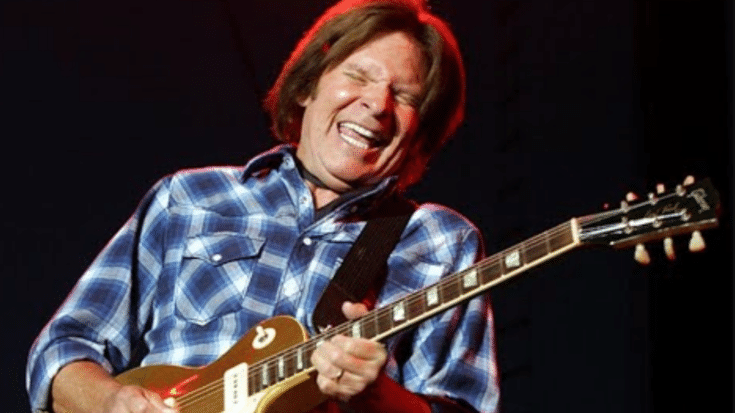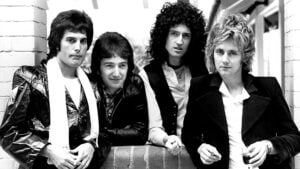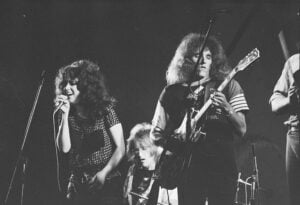10 Rock Musicians Who Recorded One-Man-Band Albums

via John Fogerty / YouTube
Advancements in recording technology have made it easier for musicians to create their albums alone. But before this tech boom, creating one-man-band albums required incredible skill and determination. Here are ten rock musicians known for producing remarkable one-man-band albums.
John Fogerty—Centerfield (1985)
John Fogerty found his songwriting groove again with “Centerfield,” a brilliant album that became his first #1 record since leaving Creedence Clearwater Revival. Songs like “Rock and Roll Girls” and “The Old Man Down the Road” shine with the spirit of classic rock.
Working on a limited budget of $35,000, Fogerty meticulously pieced together demos to complete this project. His efforts paid off, recapturing the glory of his earlier work and delivering an album that still resonates with fans today.
Roy Wood—Boulders (1973)
As the co-founder of The Move and Electric Light Orchestra, Roy Wood proved his talent with his solo album “Boulders.” Songs like “Songs of Praise” and “Wake Up” showcased his ability to blend catchy melodies with a unique sense of humor.
In “Boulders,” Wood employed studio trickery to bring his vision to life. The album’s eccentricities are a testament to his creativity, making it a memorable piece of rock history.
Skip Spence—Oar (1969)
Skip Spence’s “Oar” was overlooked upon its release but later gained recognition. Created during a fragile period in his life, the album has a raw brilliance reminiscent of the work of Syd Barrett.
Spence recorded “Oar” after his release from Bellevue Hospital, playing and singing every part himself. The haunting tracks like “Little Hands” and “Broken Heart” reflect a deeply personal journey that resonates with listeners.
Mike Oldfield—Tubular Bells (1973)
At just 19, Mike Oldfield created “Tubular Bells,” a 50-minute conceptual album featuring rock, classical, and folk influences. Known for its use in the film “The Exorcist,” the album helped shape the future sound of Virgin Records.
Oldfield’s multi-tracking skills brought “Tubular Bells” to life. Comprising only two tracks, the album stands out for its innovative approach and complex arrangements.
Steve Winwood—Arc of a Diver (1980)
Steve Winwood’s “Arc of a Diver” was a comeback album recorded on his farm. The tracks, including the hit “While You See a Chance,” feature Winwood’s soulful vocals and atmospheric arrangements.
Winwood played all the instruments, showcasing his multifaceted talent. The album helped revive his career and set the stage for his presence on MTV.
Dave Grohl—Foo Fighters (1995)
Dave Grohl’s post-Nirvana debut with Foo Fighters was a solo project. The album, featuring tracks like “This is a Call,” was a compilation of home recordings Grohl made during his time in Nirvana.
Despite its low profile approach, the album was a success. Grohl played all instruments on the record, which earned a Grammy nomination.
Prince—Dirty Mind (1980)
“Dirty Mind” was Prince’s breakthrough, mixing suggestive lyrics with funky R&B sounds. Tracks like “Head” and “Uptown” highlighted his musical genius and lyrical boldness.
Prince’s skill in playing all the instruments and producing the album himself hinted at the future heights he would reach with his music.
Emitt Rhodes—Emitt Rhodes (1970)
Emitt Rhodes’ self-titled album inspired many DIY musicians. Released alongside Paul McCartney’s solo debut, the album featured catchy melodies and inventive hooks.
Rhodes recorded the entire album himself, showcasing his knack for pop-rock music. His song “Lullabye” was later featured in the film “The Royal Tenenbaums,” contributing to his cult status.
Todd Rundgren—Hermit of Mink Hollow (1978)
Coming out of a personal breakup, Todd Rundgren created “Hermit of Mink Hollow.” Songs like “Can We Still Be Friends” captured emotional depth while showcasing his pop sensibilities.
Rundgren played all the instruments on the album. It became known for its dual-sided approach, splitting the tracks into “Easy” and “Difficult” sides.
Paul McCartney—McCartney (1970)
Paul McCartney’s first post-Beatles album was a homespun affair. Featuring tracks like “Maybe I’m Amazed,” McCartney played every instrument.
Opting for simplicity and charm, the album highlighted McCartney’s innate songwriting talent. Its raw approach stood in contrast to the heavily produced Beatles’ records, yet it showcased his brilliance.













